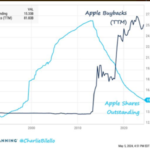I have written many articles before on the concept of market timing and the futility of it. In simple terms, time in the market is more important than timing the market. It is literally impossible to predict the perfect time to sell and the best time to buy a stock.
In most articles on why investors should not do market timing, we have seen charts showing the impact on returns when the best days are missed. That is how much an investors loses of they missed the 10 best days, 5 best days, etc. over a period of time. Missing the best days have a huge impact on returns. However none of the articles or marketing materials put out by financial institutions have accounted for the impact on returns if the worst days are missed. Obviously missing the worst days should boost one’s returns. But missing the worst days is next to impossible.
In an article published yesterday, Dr Shane Oliver, Head of Investment Strategy and Economics and Chief Economist at AMP Capital in Australia shows the impact on returns when the best and the worst days are missed in the Australian market. For the period 1995 to 2017, staying fully invested would have returned an annual average return of 11.2%. But if somehow an investors avoided the worst 40 days then the average annual return increases to 17%. On the other hand, if the investor misses the 40 days best days of the market then the annual return declines to just 3.7%.
From the article:
Chart #1 Time in versus timing
Without a tried and tested asset allocation process, trying to time the market, ie selling in anticipation of falls and buying in anticipation of gains, is very difficult. A good way to demonstrate this is with a comparison of returns if an investor is fully invested in shares versus missing out on the best (or worst) days. The next chart shows that if you were fully invested in Australian shares from January 1995, you would have returned 11.3% per annum (including dividends but not allowing for franking credits, tax and fees).
Source: Bloomberg, AMP CapitalIf by trying to time the market you avoided the 10 worst days (yellow bars), you would have boosted your return to 12.5% pa. If you avoided the 40 worst days, it would have been boosted to 17% pa. But this is very hard to do and many investors only get out after the bad returns have occurred, just in time to miss some of the best days and so end up damaging their returns. For example, if by trying to time the market you miss the 10 best days (blue bars), the return falls to 8% pa. If you miss the 40 best days, it drops to just 3.7% pa. Hence the old cliché that “it’s time in that matters, not timing”.Key message: market timing is great if you can get it right, but without a process the risk of getting it wrong is very high and if so it can destroy your returns.
Source: Another five great charts on investing by Dr Shane Oliver, AMP Capital
So the main point to remember is that market timing is a foolish strategy. Most retail investors are simply better off staying invested for the long run than stressing about avoiding the worst days or catching the best days.




